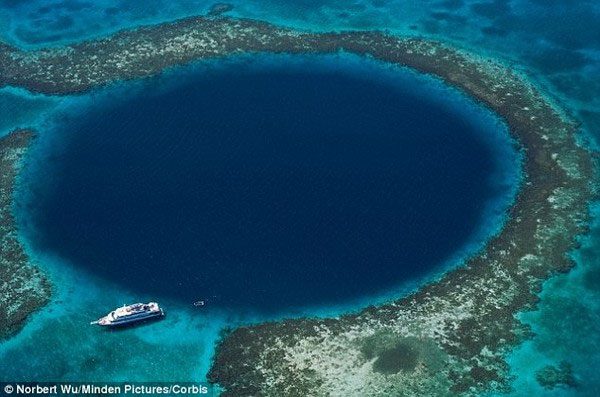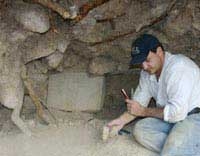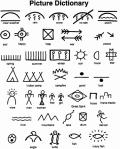Research analysis indicates that a significant decrease in annual rainfall and humidity contributed to drought and the collapse of the Maya civilization.
The collapse of the ancient Maya civilization has always been a subject of study for many scientists. A team of experts from Rice University and Louisiana State University believes they have come closer to solving this mystery, thanks to evidence collected from the Great Blue Hole.
The Great Blue Hole is an underwater sinkhole located about 70 kilometers off the coast of Belize, near the center of Lighthouse Reef. It is 124 meters deep and approximately 300 meters in diameter, formed as a system of limestone caves during the last Ice Age. From a depth of about 30 to 33 meters, the limestone formations here become increasingly complex.

Great Blue Hole.
By analyzing sediment samples obtained from the Great Blue Hole, specifically examining the color, size, and thickness of the layers of soil and comparing them with samples from the mainland, experts discovered differences in the ratio of titanium to aluminum. This discovery enables researchers to estimate the amount of rainfall in this area.
Further analysis revealed that low rainfall led to a significant drought from around 1000 to 1100 AD, which contributed to the collapse of the ancient Maya city of Chichen Itza.

Chichen Itza Pyramid.
Due to the gradual decrease in rainfall and the increasingly arid weather around 660 AD, resources became depleted, political instability arose, and wars broke out, leading to the gradual decline of the Maya Empire.
After years of struggling against adversity, a prolonged drought lasting nearly a century (from 1000 to 1100 AD) ultimately marked the end of the ancient Maya civilization.
Dr. André Droxler, the study’s author, stated: “When a major drought occurs, it brings about many consequences such as famine and instability. This finding has helped us better understand how climate change influenced the collapse of the Maya civilization.”
|
The Maya civilization is one of the most remarkable civilizations in the world established by the Maya people in the Americas over 2,000 years ago in what is now southeastern Mexico, northern Guatemala, and Honduras. The Maya civilization reached its peak in areas such as statecraft, architecture, mathematics, astronomy, and timekeeping. Based on the remnants left behind, archaeologists determine that the ancient Maya states emerged in the 1st century AD. However, most Maya states disappeared between the 9th and 10th centuries. The last state of this civilization on the Yucatán Peninsula, in present-day Mexico, collapsed in the 16th century after the Spanish conquest of the region. Perhaps the Maya civilization is one of the most influential civilizations on the modern world. The Maya calendar once raised concerns about the potential end of the world, as it concluded on December 21, 2012. Archaeologists proposed many theories surrounding the calendar, and debates continued until the predicted apocalypse did not occur. |





















































